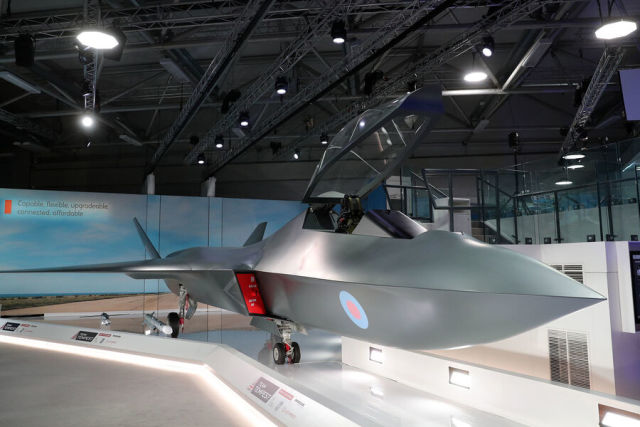London has allocated 656 million pounds for the development of technologies for the Tempest fighter The British development team received 656 million pounds ($ 822 million) to improve technologies to create a promising Tempest fighter.
A conceptual model of the aircraft was presented back in 2018, it should be delivered to the Royal Air Force by 2035. Military observer of the Newspaper.En" Mikhail Khodarenok tells what developments will form the basis of the combat vehicle and where it will be used.
A team of developers under the supervision of the British corporation BAE Systems, engaged in the development of a next-generation combat aircraft (Tempest, "Tempest"), won a contract from the Ministry of Defense of the United Kingdom to test dozens of new technologies before creating a fighter demonstrator. Defense News writes about this.
According to representatives of BAE, funds in the amount of $822 million have been allocated to finance "concepts and technologies" related to the development of the Tempest fighter.
It is reported that currently the designers of the Tempest fighter (Team Tempest) and their partners are working on 60 promising technologies and numerous conceptual developments.
In addition to BAE, Team Tempest partners are MBDA UK (the British division of the pan-European missile systems company MBDA), the developer of power plants Rolls-Royce and Leonardo UK, which manufactures sensors and electronics.
The Ministry of Defense of the United Kingdom presented a conceptual model of a new generation fighter, called Tempest, during the Farnborough Air Show in 2018 as part of the launch of a new national aviation strategy.
There are few details about which technologies are being considered at this stage of the Tempest fighter creation program. Efforts are likely to be concentrated in the following areas: advanced supersonic propulsion system, power generation, integrated information acquisition, laser weapons, integrated communication systems and low radar visibility materials.
The allocated funds are part of the planned UK government spending on the Tempest fighter project worth more than £2 billion until May 2025.
BAE Corporation reported that Tempest's British partners, working in cooperation with the Ministry of Defense, will now develop technologies "critical to the UK's defense capability" and will help form the final requirements for the next-generation fighter. This will be carried out within the framework of the Global Combat Air Program (Global Combat Aviation Program, GCAP) together with Japan and Italy. The output should be a combat air platform, which should enter service with the Royal Air Force by 2035.
"The next tranche of funding for future combat aviation will help combine the technologies and experience we have with our international partners both in Europe and in the Pacific region to create this world's best fighter by 2035," said British Defense Minister Ben Wallace.
However, why does the UK, in principle, need a Tempest fighter?
As the newspaper wrote earlier.Ru", there is no real combat use of Tempest fighters for the defense of the British Isles, because if we do not consider the option of a nuclear scenario, any armed clash with Russia, Western countries and China is excluded.
In addition, all the recent wars waged by Great Britain were coalition (usually led by the United States).
Perhaps the sixth-generation Tempest fighter will solve some tasks in the overseas territories of the United Kingdom? But in this case, the enemy of the British Air Force will be aircraft much technologically lower class even Eurofighter Typhoon, not to mention Tempest.
It turns out that this project, by and large, does not have any military significance.
And figuratively, we can say that the UK is "not in the race" to create fighters of this type, unlike China and Russia, for example.
Apparently, the sixth-generation aircraft is being created to preserve its status, and the main tasks of the Tempest project are the financial and economic plan.
London is trying to support its industry, the status of BAE Systems as the largest aviation and rocket and space company not only in the UK, but also in the world, to load production facilities, to cheer up the personnel of developers, engineering staff, highly skilled workers.
Mikhail Khodarenok

